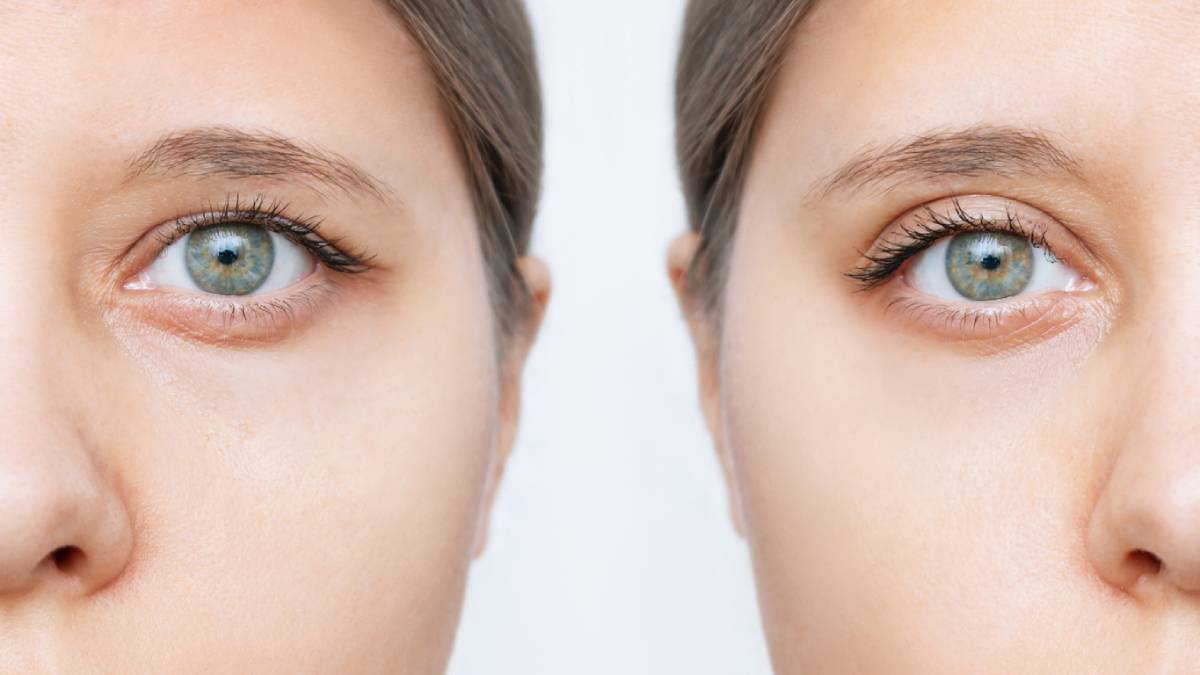
Eyelid surgery, or blepharoplasty, stands as one of the most effective and commonly performed procedures to rejuvenate the periocular area, addressing the heavy, aged appearance caused by skin laxity, muscle changes, and fat prolapse. However, when prospective patients ask, “How long do the results last?”, the answer is inherently complex and necessitates a distinction between the structural correction achieved during the surgery and the body’s ongoing, irreversible aging process. Blepharoplasty is a definitive treatment for the tissues removed or repositioned—that structural change is permanent. Yet, the eyes will continue to age from that point forward. Understanding this temporal trajectory—that the surgery resets the aesthetic clock rather than stopping it—is crucial for setting realistic, long-term expectations. For most patients, the refreshed, more alert appearance achieved by the procedure can endure for many years, often a decade or more, though the final durability is mediated by surgical technique, genetics, and the patient’s lifestyle choices.
Structural Correction and the Ongoing Aging Process
The answer is inherently complex and necessitates a distinction between the structural correction achieved during the surgery and the body’s ongoing, irreversible aging process.
The primary objective of blepharoplasty is to physically remove or reposition tissue that has contributed to the aged appearance. In the upper eyelids, this typically involves excising excess, redundant skin and sometimes a sliver of the underlying muscle. In the lower eyelids, it often involves repositioning or removing the herniated fat pockets that cause puffiness, and tightening the skin or muscle. These structural changes are permanent; the excised skin and fat will not grow back, and the tightened supporting tissues remain permanently repositioned. However, the skin adjacent to the surgical area, and the skin that remains, will continue to lose collagen and elastin over time. Gravity will continue its subtle pull, and the patient’s underlying bone structure will continue to resorb. Therefore, the longevity is not measured by the stability of the surgical site, but by how long the aesthetic improvement successfully counters the new signs of aging that accrue over the post-operative decade.
Upper Eyelid Blepharoplasty: Duration of the Lift
The vast majority of patients who undergo an upper blepharoplasty can expect the results to last between 10 and 15 years.
The upper eyelid procedure, which primarily addresses dermatochalasis (excess skin), is generally considered to yield the most enduring results. The vast majority of patients who undergo an upper blepharoplasty can expect the results to last between 10 and 15 years. This remarkable duration is due to the fact that the surgeon removes the bulk of the lax skin that was causing the visual and functional impairment. While the remaining skin will inevitably relax over time, it takes a full decade or more for a significant amount of new skin redundancy to accumulate to the point where it once again obscures the natural crease or causes a heavy, hooded appearance. In some cases, factors like severe sun damage or pronounced genetic laxity may lead to a shorter lifespan of the result, but a repeat procedure, often simpler than the first, is typically not required until well into the second post-operative decade.
Lower Eyelid Blepharoplasty: A More Permanent Contour
For the lower eyelid, which primarily addresses herniated fat (bags), the results are often considered permanent.
The longevity profile of the lower eyelid procedure is distinctly different. For the lower eyelid, which primarily addresses herniated fat (bags), the results are often considered permanent. The fat pockets that cause the under-eye puffiness are either surgically removed (excision) or, more commonly today, meticulously repositioned over the orbital rim to camouflage the tear trough hollow and create a smoother contour. Once this fat is removed or repositioned, it does not typically return. The structural correction of the fat is the enduring element. However, what might require re-intervention or adjunctive treatments years later is the skin itself. Continued loss of collagen and bone volume can lead to new signs of aging, such as fine wrinkles or midface descent, rather than a recurrence of the original fat bags, which means the underlying correction holds fast.
The Influence of Surgical Technique: Fat Repositioning
Modern surgical techniques, especially fat transposition or repositioning, are designed for greater long-term stability than older excisional methods.
The specific surgical technique employed by the surgeon is a powerful predictor of the result’s lifespan and quality. Modern surgical techniques, especially fat transposition or repositioning, are designed for greater long-term stability than older excisional methods. Instead of simply removing fat (which can sometimes lead to a hollowed-out look years later as fat naturally dissipates with age), the contemporary approach involves meticulously preserving and moving the existing fat to fill the adjacent hollows (the tear troughs). This redistribution provides a more volumetrically balanced and anatomically sound correction that integrates seamlessly with the aging of the midface, ultimately leading to a result that ages more gracefully and requires fewer touch-ups than a procedure focused only on removal.
The Role of Genetics and Ethnicity
A patient’s genetic predisposition to skin laxity, collagen production, and underlying bone structure significantly mediates the rate at which the results “wear off.”
Biological and genetic factors are arguably the most unpredictable variables affecting the longevity of the results. A patient’s genetic predisposition to skin laxity, collagen production, and underlying bone structure significantly mediates the rate at which the results “wear off.” Individuals with naturally thicker, more elastic skin and high bone structure may experience much longer-lasting results than those with thin, crepe-like skin or a genetic tendency toward early fat atrophy and bone resorption around the orbits. Ethnicity also plays a role, as differences in the structure of the eyelid crease, the thickness of the orbicularis muscle, and the presentation of periorbital fat influence both the technical approach and the subsequent aging pattern. This is why a thorough personal and family history of aging is a critical component of the initial consultation.
Lifestyle Factors: External Threats to Longevity
The most aggressive external factor that compromises the longevity of the blepharoplasty result is chronic, unprotected sun exposure.
While the surgeon can correct the damage that has occurred, the patient’s lifestyle choices determine the future rate of deterioration. The most aggressive external factor that compromises the longevity of the blepharoplasty result is chronic, unprotected sun exposure. UV radiation is the primary driver of photoaging, directly destroying the residual collagen and elastin fibers in the skin surrounding the eyes, thus accelerating the return of fine lines and skin redundancy. Similarly, smoking drastically impairs skin circulation and collagen synthesis, leading to premature aging and potentially poor healing. Patients who are meticulous about daily SPF use, wear sunglasses, and avoid smoking will consistently maintain their surgical results for a significantly longer period than those who do not adhere to these fundamental skin health practices.
Adjunctive Treatments: Sustaining the Periorbital Harmony
The strategic use of non-surgical adjuncts helps to sustain the youthful look created by the surgery.
The long-term maintenance of the periocular area rarely relies on surgery alone. The strategic use of non-surgical adjuncts helps to sustain the youthful look created by the surgery. For instance, while blepharoplasty corrects skin and fat, it does not stop the formation of dynamic wrinkles. The periodic use of neuromodulators (Botox) can relax the muscles that cause crow’s feet, preserving the smoothness of the skin around the eyes and preventing the formation of new wrinkles that would visually age the area. Similarly, dermal fillers can be used years later to address volume loss in the cheeks or temples, ensuring that the eyelids remain in harmonious proportion with the overall aging face. These maintenance treatments effectively extend the aesthetic lifespan of the surgical correction.
Assessing the Need for Revision: A New Kind of Aging
The need for a secondary procedure is typically driven not by a failure of the original surgery, but by the onset of a new kind of aging.
When a patient contemplates a secondary or revision procedure years after the initial blepharoplasty, it is essential to understand the clinical reason for the repeat surgery. The need for a secondary procedure is typically driven not by a failure of the original surgery, but by the onset of a new kind of aging. The original problem (e.g., severe upper lid skin hooding) has been solved permanently. However, a patient might return 12 years later needing a brow lift because the forehead has descended, pushing tissue down onto the lid. Or, they might need lower lid resurfacing to address skin texture and fine lines, rather than the fat bags that were addressed permanently in the initial operation. This distinction is paramount for patient comprehension and managing the ongoing expectation of maintenance.
The Time Until “Looking Like Before”
The key is to understand that the patient will likely never truly revert to their pre-surgical appearance.
Instead of focusing on a fixed number of years, a more helpful perspective for patients is considering the time until they reach the point of “looking like before.” The key is to understand that the patient will likely never truly revert to their pre-surgical appearance. If a patient underwent surgery at age 50, at age 65 they will look like a well-aged 65-year-old, not a 50-year-old. Crucially, they will look significantly better and more refreshed than a hypothetical parallel self who did not have the surgery at age 50. The permanent removal of tissue sets a new, lower baseline for the aging process, meaning the benefits are continually compounded against the severity of the uncorrected aging. The ultimate longevity is measured by the difference the procedure maintains between the patient and their unoperated twin.
Longevity as a Compound Benefit
The ultimate result of a successful blepharoplasty is a continuous, compounding benefit.
In summary, the longevity of eyelid surgery results is best understood as a tiered benefit. The structural correction of fat and muscle is essentially permanent. The correction of skin redundancy in the upper eyelid lasts an average of 10-15 years before natural aging requires consideration of further intervention. The ultimate result of a successful blepharoplasty is a continuous, compounding benefit that resists the forces of aging for a significant period. While the patient will continue to age, the procedure fundamentally alters the course of that aging, providing a dramatic, long-lasting aesthetic and functional improvement that is well worth the initial investment and, with proper care, is one of the most durable facial procedures available.
